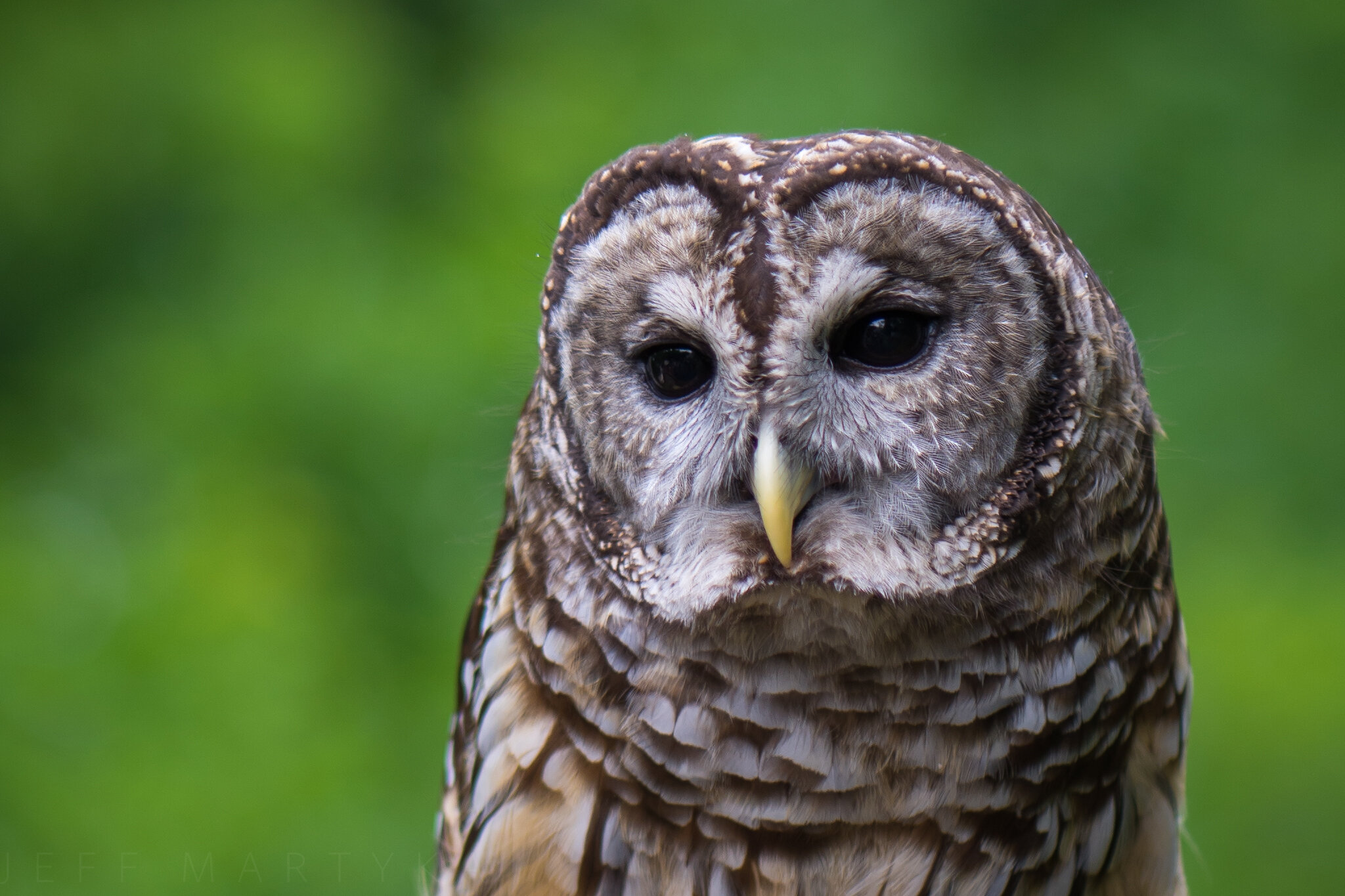Barred Owl
Strix varia
IDENTIFICATION
Length: Barred owls are between 17 and 20 inches long.
Weight: Barred owls average 1 to 2 pounds.
Color: The barred owl is a medium-sized grayish-brown bird of prey that has a dark ring around its face. It looks similar to a great horned owl, but it is slightly smaller and has no ear tufts. Barred owls have dark eyes, while all other Minnesota owls have yellow eyes.
Sounds: “who cooks for you” / ”who cooks for you-all”
HABITAT
Range: Barred owls are found though most of the eastern USA, as well as a large portion of southern Canada. They are found in dense forested areas, including swamps.
Diet: Barred owls prey on mice, squirrels, rabbits, birds, frogs, fish and crayfish.
Status: Least Concern (population increasing). Minnesota’s barred owl population appears to be stable. Like all owls, the barred owl is a non-game bird, which means it can't be legally hunted or trapped. Still, some are hunted and trapped illegally.
Barred Owl tail feathers. Image from Feather Atlas (USFWS).
LIFE CYCLE
Reproduction: Barred owls begin nesting in March. They nest in hollow trees, in abandoned nests of other animals or in nest boxes. The female lays two or three white eggs, which hatch in 28 to 33 days. The newly hatched young are covered with fine white down. Young barred owls leave the nest four to five weeks after hatching.
Adaptations: Many owls, including the barred owl, have asymmetrical ear openings that aid in their incredible ability to hunt relying on their hearing. Owls also have highly specialized feathers that keep them silent while flying; This helps them ambush their prey from the sky.
Owls can be found on every continent except Antarctica. The family Strigidae (“true owls”) contains 189 species across 25 genera. The genus Strix means “earless owls”.
Barred Owl range. Image from AllAboutBirds.org.




